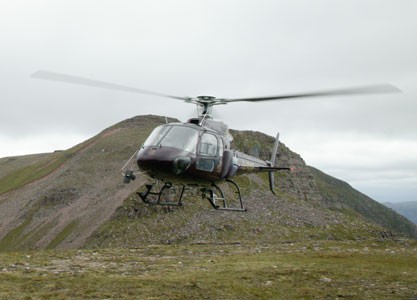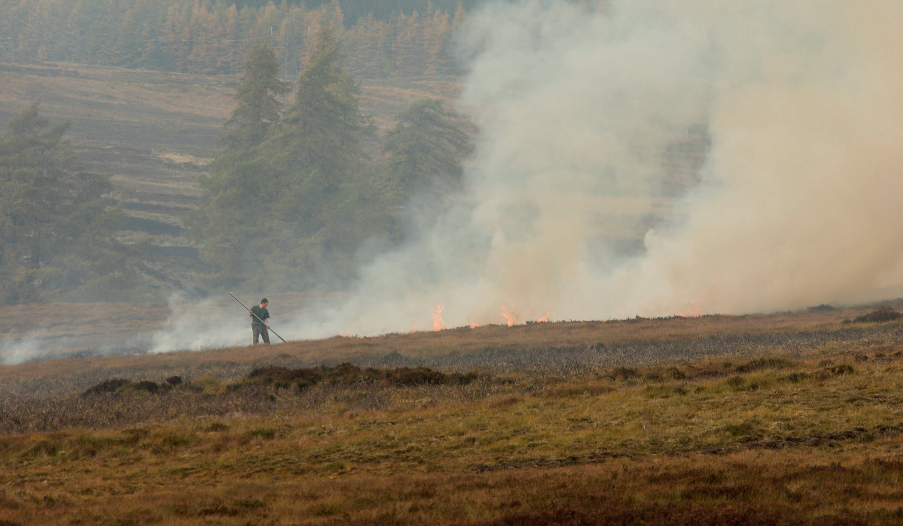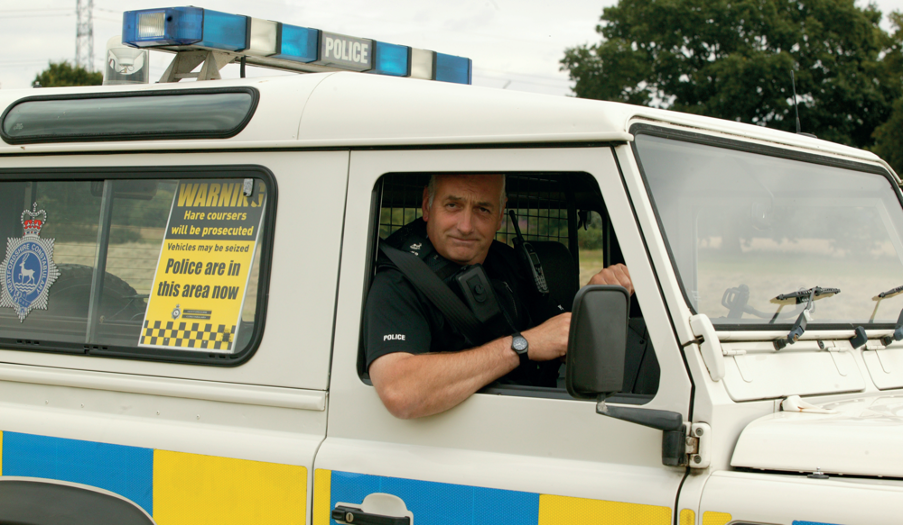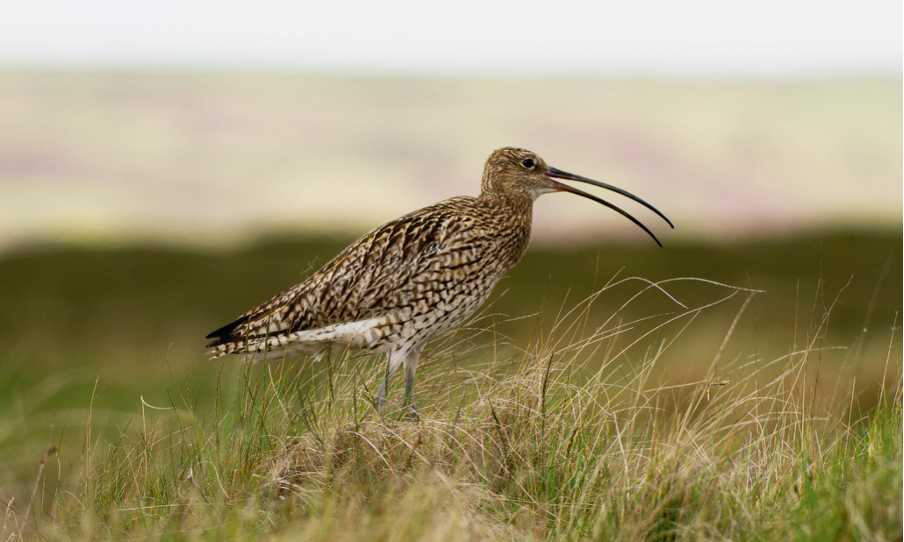News
The bird’s eye view of deer
Ian Valentine joins a team of DCS officers on a helicopter deer count on the West Coast of Scotland and discusses the changing face of the organisation
Would you like to appear on our site? We offer sponsored articles and advertising to put you in front of our readers. Find out more.
The Eurocopter Squirrel quickly gained height, sweeping north-west from Inverness Airport over the Moray Firth and towards the fertile Black Isle on the other side. It was early August and beneath us a small crowd had gathered to stare at the lifeless sperm whale that had beached on the southern edge of the Firth. They looked up, perhaps wondering if we were coming to remove it. With a maximum load capacity of one tonne, this chopper would manage several deer carcases, but not a whale.
Today there were no rifles – just a GPS, a digital camera and five sets of eyes. I was flying west with officers of the Deer Commission for Scotland (DCS) to carry out one of their annual counts of the deer population on the northern Assynt Peninsula, above Ullapool in Sutherland. Before long, we were pushing over the Rogie Falls towards the Loch Glascarnoch reservoir, with Beinn Dearg shrouded under clouds in the distance. It took no more than an hour to cross the breadth of the country, with the high peaks reduced to mere molehills beneath our blades.
The original plan had been to count the deer on the Caenlochan deer management group in the Grampian Hills, where the DCS put in place a Section 7 Control Agreement with local landowners to reduce the population of deer from 42 per square kilometre to 19. Its officers co-ordinated with local stalkers to remove 8,000 deer in a three-year period, in order to protect the vegetation in the numerous Special Areas of Conservation (SACs) in the region. This summer’s count will be crucial for the area, as the results will determine whether further action needs to be taken.
I have spoken in the past with members of that culling party, all of them traditional stalkers, who joined the helicopter sorties into those hills and they all concurred that the process was done in a humane fashion. There had been consternation among the stalkers beforehand, especially following the Glenfeshie Section 10 emergency extraction of 300 deer in January 2004, which caused such fury among many in the stalking community; but afterwards they all seemed relaxed about the way the Caenlochan cull was executed.
It would have been good to see the Caenlochan area firsthand, but the weather was against us, cloaking the hills in low cloud and rain that would render the helicopter spotters useless. “We would have liked to show you the Caenlochan too, not least to point out the geographical constraints of carrying out a large-scale cull without the use of helicopters. But there is no point travelling that way if we can’t do the job properly,” explained Alastair MacGugan, director of stakeholder relations at the DCS, who was sitting next to the PDG helicopter pilot Andy Lindner.
Assynt is an altogether different scenario for the DCS, but no less interesting. The deer densities do not present the same challenges for managing SACs in line with the European Directive targets for 2010, as was the case with Glenfeshie and Caenlochan. However, Assynt does highlight another cause for concern among the deer community, namely a clash in landowner interests. Indeed, the three primary landowners on the ground we were due to count – a private sporting estate, a conservation body and a community-based partnership – each had individual intentions for the deer on their land.
Alastair had been joined by DCS deer managers Sinclair Coghill and Graeme Taylor, who spend much of the summer collecting information and processing it for the national database at the Scottish Natural Heritage (SNH) headquarters in Inverness, where the DCS is now based. Alastair has been involved with deer since he was a lad and worked with the British Association for Shooting and Conservation in Scotland for many years before joining the DCS. Sinclair is DCS deer manager for the North and Sutherland, having previously worked for the Forestry Commission, and Graeme left the Scottish Deer Centre in Cupar last year to join the team.
The criticism that their body has received in the past clearly rankles with all of them. They have heard the accusations that the DCS treats the deer like vermin and that the commission believes that the only good deer is a dead one. “We have all moved on since Glenfeshie and ‘helicopter’ is not the dirty word it once was,” said Alastair, “but we still field the odd insult at the various game fairs from people who believe we treat the deer in Scotland like vermin. And it does hurt, because we were all brought up to respect deer like any other stalker.”
“We’re all deer people,” added Graeme, whose father is a headstalker in Aberdeenshire. “So, to be told that we don’t care about the welfare of the deer is bound to put our backs up. Each of us is in it for the deer.”
Alastair was involved with guiding the helicopters at Glenfeshie and he remembers clearly both the event and the reaction to the cull.
“There are all sorts of wild stories about what we were meant to have got up to, but I can assure you that it was carried out with the utmost professionalism and respect for the welfare of the deer,” he said. “The one regret I do have is the way the event was handled afterwards. I don’t think we communicated well enough with the stalking community and I think some of the resentment could have been avoided if we had done better with our public relations.”
Alastair was also co-ordinating the cull at Caenlochan, which managed to avoid the more damning sort of headlines that Glenfeshie attracted, so perhaps the PR lessons had been learned? “One of the successes of Caenlochan was the manner in which we worked alongside the stalkers,” said Alastair. “We were determined to make the local stalkers stakeholders in what we were doing and keep them involved in the process. We all had to get our hands dirty, so I like to think that it was reassuring for the stalkers to see that the DCS officers actually knew how to handle a deer properly. Some people think that the basic tenets of deerstalking change when you add a helicopter into the mix. All it does is allow us to move quicker into an area – the rules about taking a safe and humane shot still apply.”
The DCS has developed its own code of good practice for use of helicopters with deer, which demands that the welfare of the deer is the priority at all times. It worked alongside vets to determine the extent of stress that a deer will cope with before the helicopter is deemed to cause a damaging effect. “In truth, the vets reckoned we could push it harder than we currently do,” said Alastair, “as they believe the natural flight reaction of the deer allows them to deal with a high level of stress. Don’t forget that deer will be just as stressed by a count conducted on an ATV or by a line of men – it is exactly the same stimuli. The chopper is no more than an aerial Argocat, after all. With the helicopter, however, we can react more quickly when we see the signs of stress escalating.”
Alastair sees it as pulling on a rubber band – as long as you don’t pull too hard, then it will only stretch, but not snap. Sitting in the cockpit, he is able to monitor how the deer react, liaising with the pilot next to him if the deer start to exhibit signs of being overstressed. “It really comes down to common sense,” he said, through the headsets, as the helicopter circled round a scattered group of deer. “You can see that these deer are alarmed, but not unduly, as they are content to group up and watch us.
But if you start to chase them over steep ground, separating hinds and calves, then you have pushed it too far. A good sign that the deer have had enough is when they just stand and turn, as though brought to bay by a pack of hounds. As soon as we see that sort of reaction, we back off immediately.”
The pilot, Andy, has 30 years’ experience of low-level flying under his belt and eased the rig round the hills instinctively. Having developed an understanding of the deer and the deer officers over the years, he could often anticipate what was needed before the instruction came. Before we set off, he gave me a quick safety brief. “If ever you need to get out when the blades are still turning, then always move forward, as I’ll be able to lift the blades. Never move towards the back.”
“What happens if I do that?” I asked, dumbly.
“You’ll be killed by the tail blades,” he replied simply. “You’ll be quite happy – you won’t feel a thing. But I’ll be bloody annoyed because I’ll have to walk off the hill. And if you start to feel sick, then don’t be proud – just let me know and we’ll set you down on the heather. I promise we’ll come back for you, though maybe not if you’re sick in my helicopter.” I lasted the first hour-and-a-half before the rollercoaster ride gave my breakfast claustrophobia.
Alastair was in charge of the count in the air, directing Andy to ensure that the whole hill was covered. Using a GPS, he can plot a chart of where the helicopter has flown, marking pockets of deer, which are counted and recorded by Sinclair and Graeme in the back. If there are too many deer in a herd to be counted by sight, then the chopper is rotated into a position where Graeme can capture a digital image on his camera, which can be scrutinised more accurately in the office. While technology is not the answer to everything in life, it would be insane not to use it when available.
“There’s no doubt that we get more accurate results using this method,” said Alastair, “Admittedly, the heli-counts are still hampered in woodland areas, when often we would be forced to conduct an estimation based on an index system, allowing us to gauge an increase or decrease in numbers, rather than giving an exact figure. Walked counts, with teams of spotters working into the wind, can be very effective and we are certainly not advocating that estates stop doing them. After all, a helicopter is a far more expensive option. But the great benefit of the helicopter is time. We can do a stretch of ground in a morning that might take a week to count properly on foot. It would be impossible to create a census of deer on the various deer management groups that we cover without them.”
If you ever want to annoy a DCS officer, then simply ask him or her if there are too many deer in Scotland. I’ve tried it a few times and it’s quite fun. It tends to elicit a look of utter frustration, manifested by a shake of the head or even a foot stamp. “We don’t deal in numbers,” replied Alastair coolly. “Only densities. Numbers are meaningless. If we’re honest, we don’t even know how many deer there are in Scotland, so we can’t say whether there are too many or too few. Our role is to ensure that there are not too many deer in specific areas that would suffer from over-grazing. If an estate or deer management group does not fall into that category, then we won’t get involved.”
As a result, the deer officers often find themselves playing piggy in the middle. On occasion, this can be between the scientists who designate the desirable densities for a certain area and the landowners or stalkers who resent having to reduce the head of deer on their land. At other times, they find themselves caught between individual landowners, who have differing designs for the same herd of deer, an itinerant species that doesn’t respect our artificial boundaries.
“All we can do in cases like this is to report the facts as we see them,” explained Sinclair. “We do get requests from landowners to intervene if they feel that their neighbours are being too hard on the deer, but we can only advise that neighbours work in a cross-border collaborative manner where possible.”
Next April, the DCS will be fully merged into SNH. This has set alarm bells ringing among a sector of the deer community, as they fear that the good relationships built during the past few years will be lost as the commission and its staff are swallowed into the conservation body. While the DCS has been criticised in the past, its experienced operatives have also worked as a buffer between private landowners and SNH.
Is this a case of better the devil you know?
Alastair is confident that the status quo will remain, despite the merge. “We are committed to carrying on our current role,” he said, as the chopper took on its final barrel of fuel for the journey home. “One of the benefits of the DCS, as we see it, is that we are a small, close-knit team with staff who know their individual roles, allowing us to deal with problems as we see them. We don’t want that to be altered by an increase in bureaucracy and committee meetings. We may have to change our jerseys and letterheads, but hopefully our jobs will remain the same. Indeed, we may even be able to wag the dog by being more closely tied to SNH. The current Scottish Executive is committed to preserving the deerstalking heritage in Scotland and all the jobs that come with it, so I fully expect that we will be allowed to carry on working towards that end.”
Related articles
News
Hit pause on flawed rollout, urges BASC
BASC calls for delay to the Scottish government’s muirburn licensing scheme amid concerns from practitioners over the code’s workability.
By Time Well Spent
News
More power to police for tackling poachers
Following countryside organisations’ campaigning, penalties for illegal coursing have increased, with average fines up from £360 to £6,000
By Time Well Spent
Manage Consent
To provide the best experiences, we use technologies like cookies to store and/or access device information. Consenting to these technologies will allow us to process data such as browsing behavior or unique IDs on this site. Not consenting or withdrawing consent, may adversely affect certain features and functions.
Functional Always active
The technical storage or access is strictly necessary for the legitimate purpose of enabling the use of a specific service explicitly requested by the subscriber or user, or for the sole purpose of carrying out the transmission of a communication over an electronic communications network.
Preferences
The technical storage or access is necessary for the legitimate purpose of storing preferences that are not requested by the subscriber or user.
Statistics
The technical storage or access that is used exclusively for statistical purposes.
The technical storage or access that is used exclusively for anonymous statistical purposes. Without a subpoena, voluntary compliance on the part of your Internet Service Provider, or additional records from a third party, information stored or retrieved for this purpose alone cannot usually be used to identify you.
Marketing
The technical storage or access is required to create user profiles to send advertising, or to track the user on a website or across several websites for similar marketing purposes.



